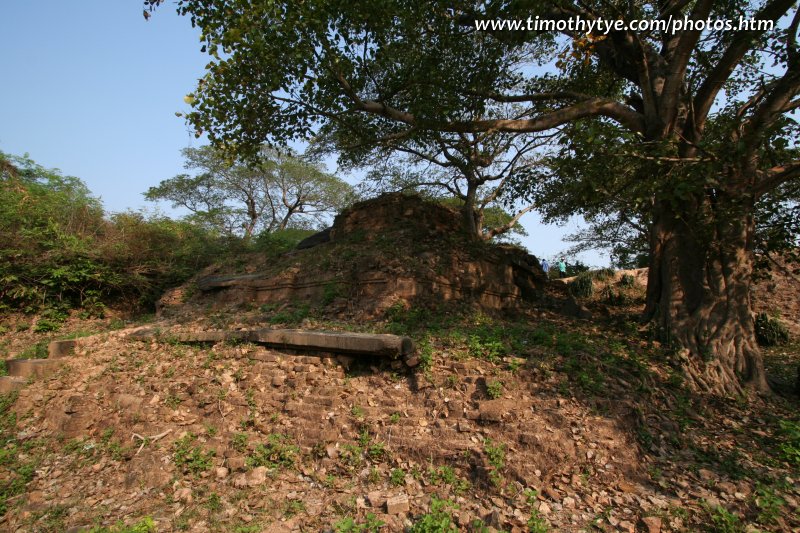 Ak Yum (25 February, 2006)
Ak Yum (25 February, 2006)
Prasat Ak Yum (GPS: 13.42477, 103.77672) (also written Ak Yom) is one of the oldest ruin in Angkor. Built in the 7th to 9th century, it is located on the south side of the West Baray, at about one kilometre east from its south-west corner.
I have read about this obscure ruins and have enquired with Mr Han, my tuk tuk driver, on how to get there. It was new to him too, and he wasn't sure.
Ak Yum on Google Maps Street View
Ak Yum is  in the centre of the Map of Angkor
in the centre of the Map of Angkor
Upon arriving by the banks of the West Baray, Mr Han went to look for help. He came back with another person on another motorcycle. It was one of the park keepers. He asked the park keeper to help take my girlfriend Chooi Yoke and me to Ak Yum.
The journey to Ak Yum was done on the back of two motorcycles. It was one of the first few times Chooi Yoke had ridden on a motorbike and she was quite excited. The two motorcycles sped through the sandy bund along the edge of the great baray. We were terrific by the speed these two guys were going on the soft red earth. It was a bit of an anti climax when we suddenly arrived at Ak Yum. It was located on a slope slightly below the dirt track.
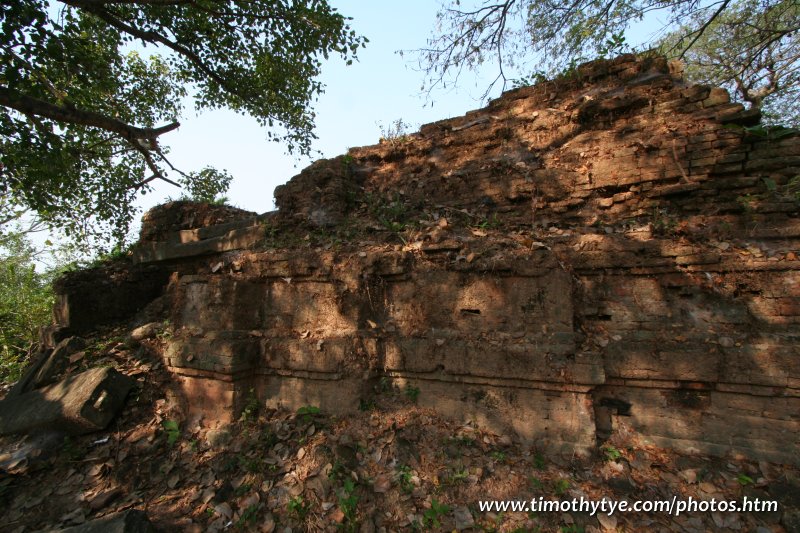 The ruins of Ak Yum (25 February, 2006)
The ruins of Ak Yum (25 February, 2006)
Ak Yum is not a spectacular temple, and for most tourist, unless they are hardcore explorers like myself, willing to learn about Angkor indepth, they will find Ak Yum to be a yawning disappointment. The ruins have not been entirely cleared. Nevertheless, Ak Yum provided great archaeological importance for being the oldest ruins in the region - older even than the first Angkor. Ak Yum is even older than the West Baray. When the baray was constructed, it caused part of Ak Yum to be buried. When conservations restored Ak Yum, they had to move a large amount of earth and even had to blast the dike of the baray.
Ak Yum was probably started in the 7th century but did not take its final form until the beginning of the 9th. There is evidence of renovations carried out and the re-use of many of the stones. Ak Yum must have been partially buried when the axial road west from the first Angkor city of of Bakheng was established. Then the present baray was built around the 11th century, and Ak Yum was pretty much buried under the dike of the southern bank.
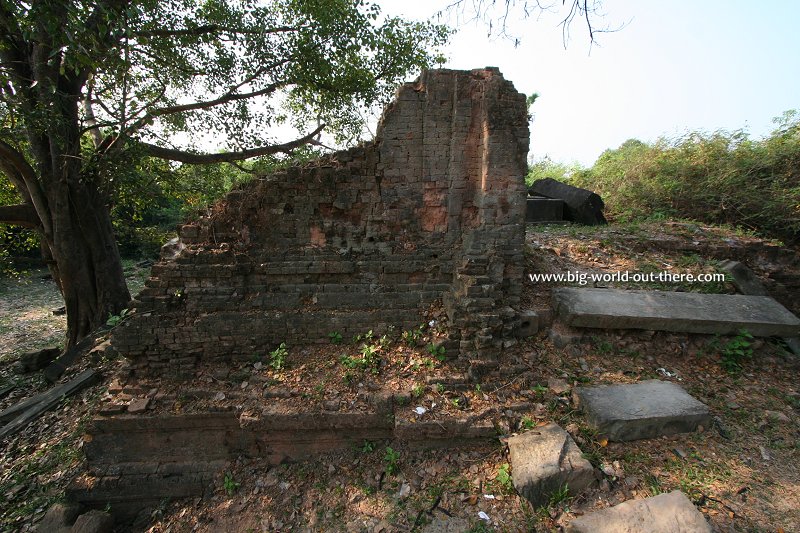 My first sight of Ak Yum (27 February, 2006)
My first sight of Ak Yum (27 February, 2006)
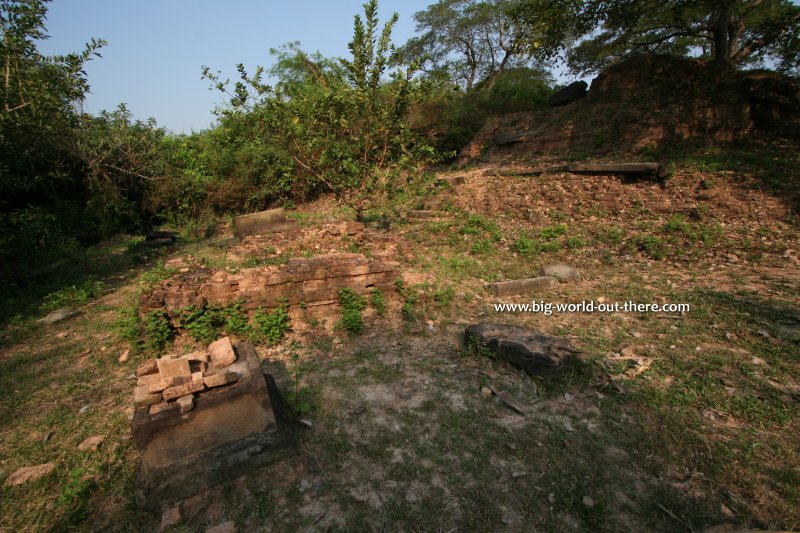 Ak Yum is in an advance stage of ruin (27 February, 2006)
Ak Yum is in an advance stage of ruin (27 February, 2006)
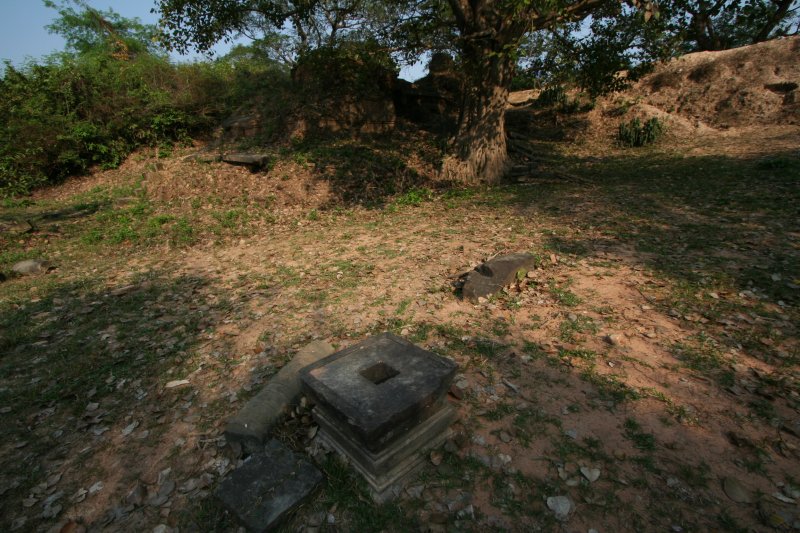 Remains of a "yoni" at Ak Yum (27 February, 2006)
Remains of a "yoni" at Ak Yum (27 February, 2006)
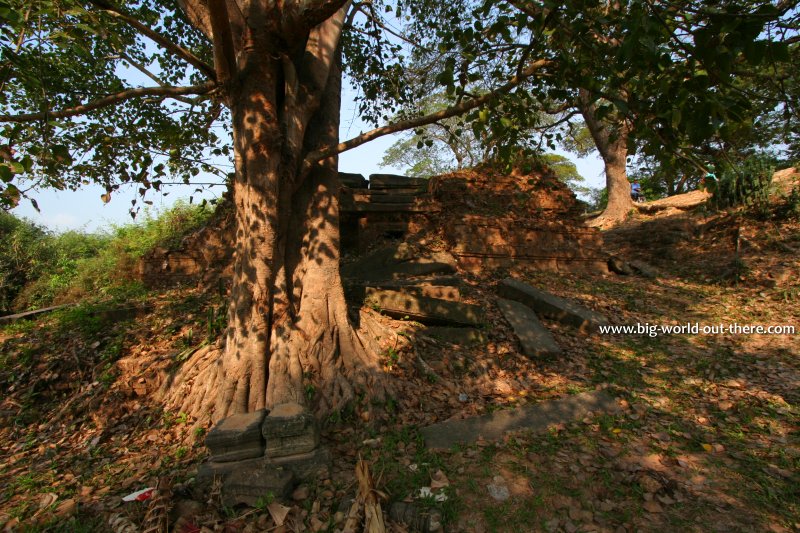 Trees encroaching on the ruins of Ak Yum (27 February, 2006)
Trees encroaching on the ruins of Ak Yum (27 February, 2006)
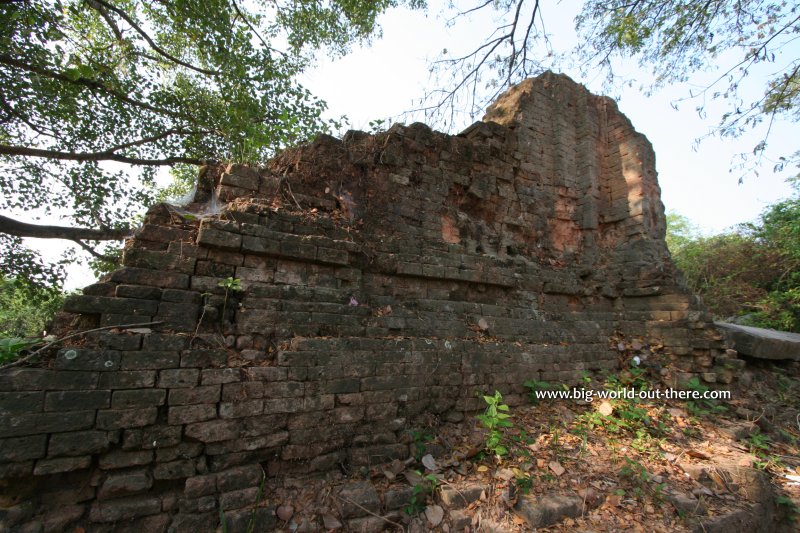 What remains of a "prasat" at Ak Yum (27 February, 2006)
What remains of a "prasat" at Ak Yum (27 February, 2006)
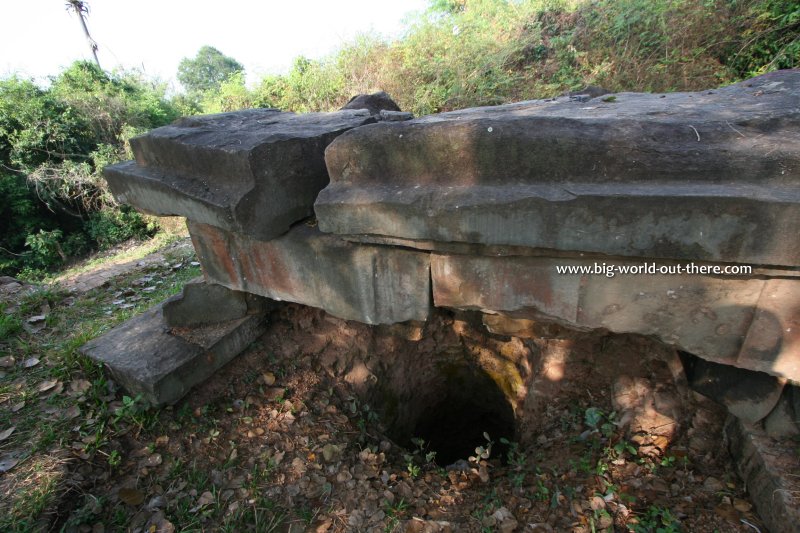 The in situ stones of Ak Yum (27 February, 2006)
The in situ stones of Ak Yum (27 February, 2006)
Inscriptions on the jamb stones and on a "stone of the nine divinities" give respectively the dates of 609, 704 and 1001. From these ancient inscriptions, we learn that Ak Yum was dedicated to the deity Gambhiresvara. It was an early manifestation of the temple mountain - I could even call it the prototype. At that time, a true tiered pyramid like those dedicated to the cult of the "Devaraja" or royal linga has not yet been established. Nevertheless, with its terraces on three levels, Ak Yum was already adopting the step pyramid style. The construction of Ak Yum, according to archaeologist Philip Stern, must have been between the departure of king Jayavarman II for Phnom Kulen and the accession of Indravarman in 877. Several other remains, evidently of pre-Angkorian design, have been found in the surrounding area.
I found that Ak Yum was built entirely of bricks. Only the surrounds were of sandstone. The base platform as well as the two upper tiers were also bricks. There are projecting motifs on the retaining walls. According to archaeological surveys, the sanctuary must have been covered with a timber framework. That's because holes for the supporting beams can still be seen on the walls.
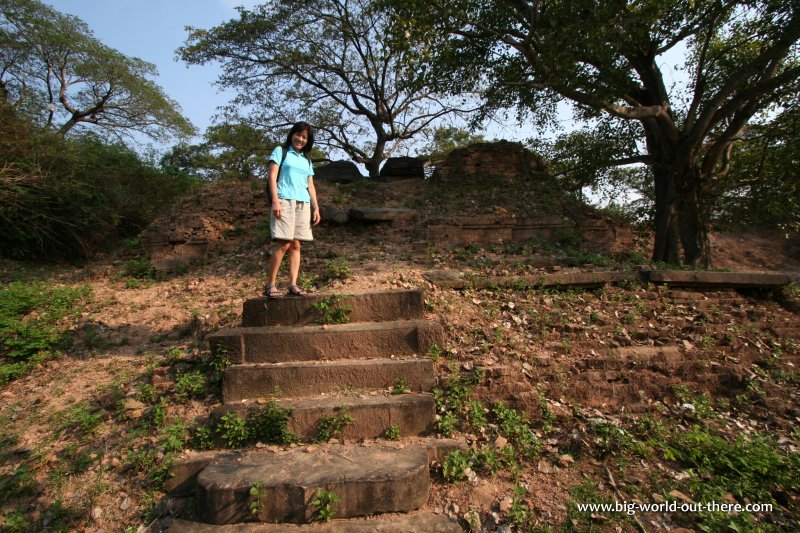 My wife Chooi Yoke standing at the top of the stairs at Ak Yum (27 February, 2006)
My wife Chooi Yoke standing at the top of the stairs at Ak Yum (27 February, 2006)
How to reach Ak Yum
Ak Yum is on south bank of the West Baray. I think you would need help from someone who has been there. This is not a big and spectacular temple. Only hardcore Angkor enthusiasts visit it, so I do not want you to be disappointed.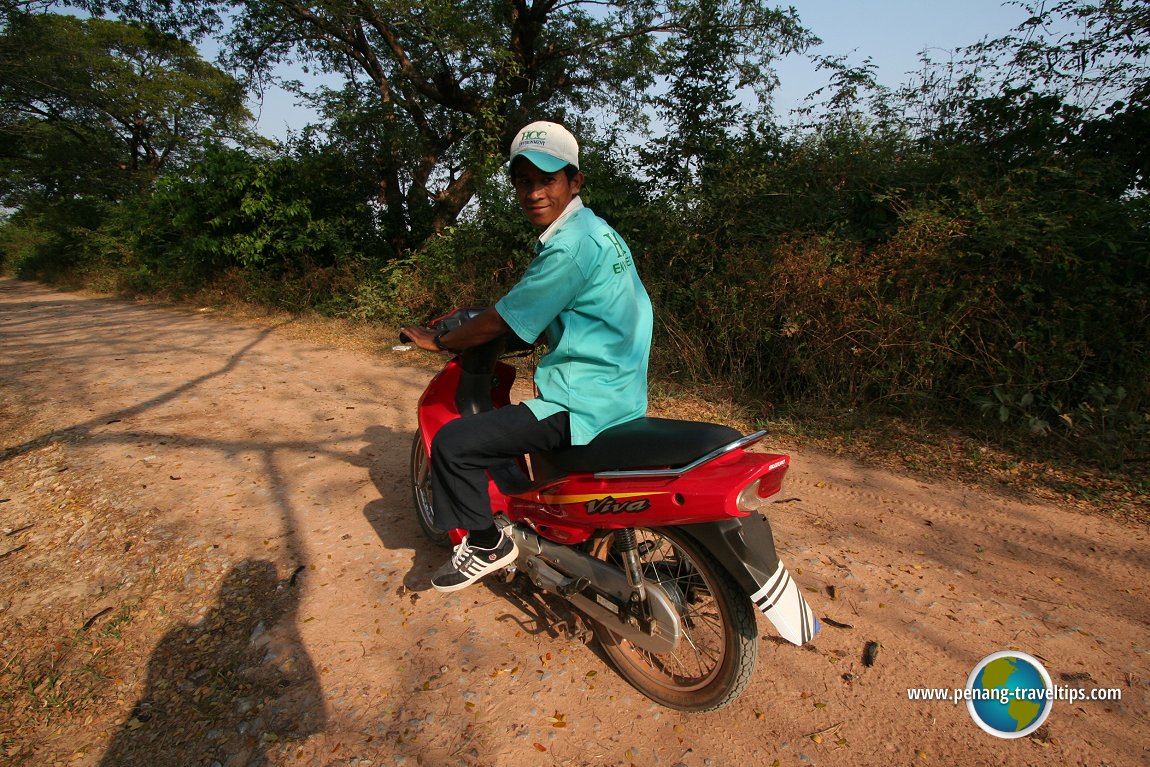 To reach Ak Yum, our tuk tuk driver arranged for this friendly park worker to take my wife on his motorbike (27 February, 2006)
To reach Ak Yum, our tuk tuk driver arranged for this friendly park worker to take my wife on his motorbike (27 February, 2006)
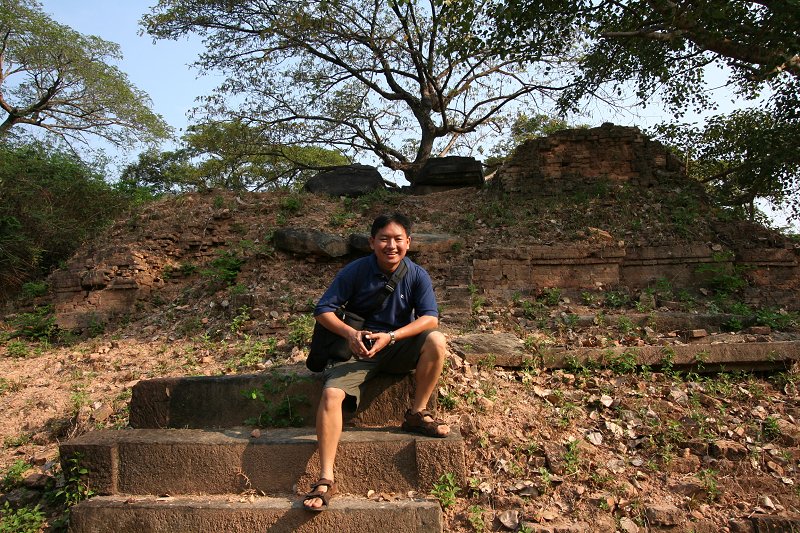 Timothy Tye at the ancient Angkor ruins of Ak Yum (27 February, 2006)
Timothy Tye at the ancient Angkor ruins of Ak Yum (27 February, 2006)
 Latest updates on Penang Travel Tips
Latest updates on Penang Travel Tips
 Map of Roads in Penang
Map of Roads in Penang
Looking for information on Penang? Use this Map of Roads in Penang to zoom in on information about Penang, brought to you road by road.
Copyright © 2003-2025 Timothy Tye. All Rights Reserved.

 Go Back
Go Back